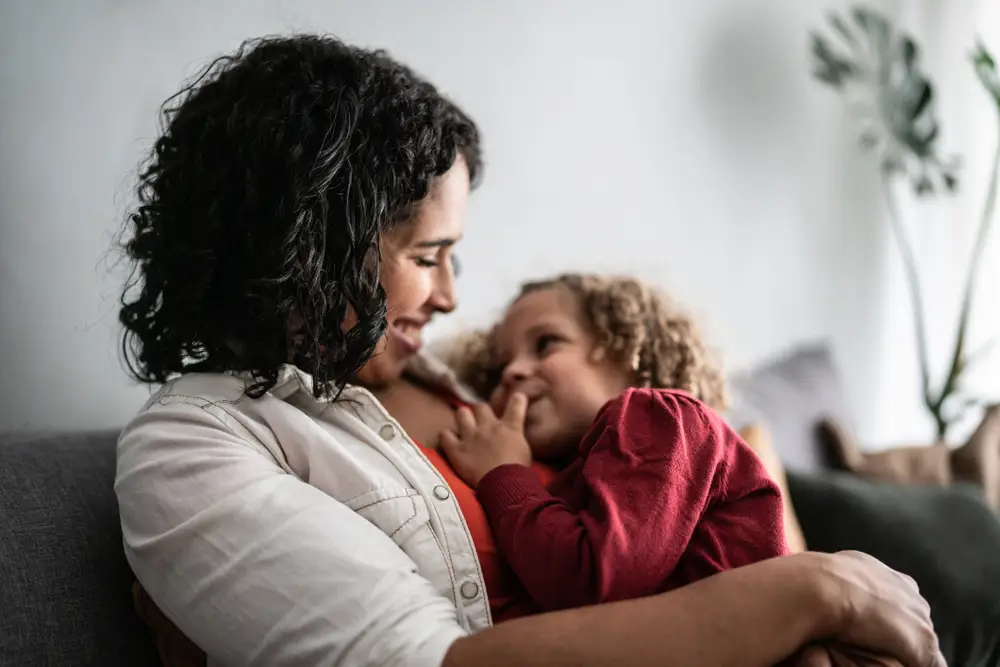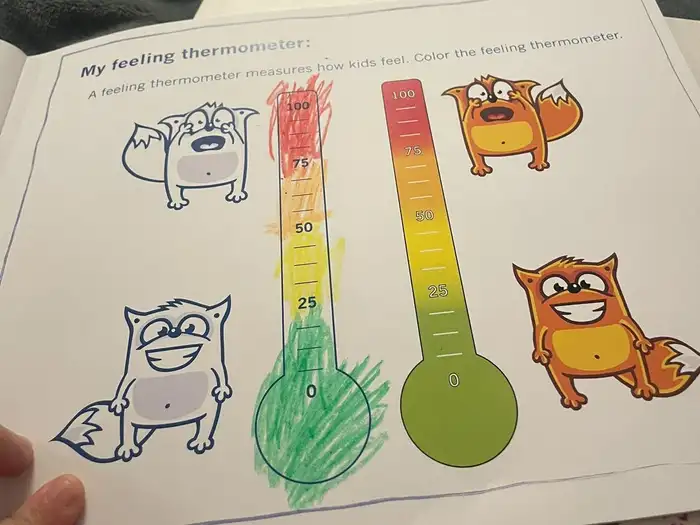I’m teaching my kids financial literacy and self-compassion. My immigrant parents didn’t have the tools to do the same for me.

A mother embraces her child
As I sit on our backyard swing and watch my 6-year-old son and 2-year-old daughter play, I cannot help but think that the way I parent is different from how my immigrant parents raised me.
They parented for us to survive, allowing me to parent my children to thrive.
Growing up, I remember my parents using coupons and rain checks, and comparing supermarket ads to find the cheapest options. I learned these shopping techniques passively while watching them discover how supermarkets operate in the US and translating for them. This is in stark contrast to the way I parent, where my son is an active learner.
I take my son shopping with me
When it comes to shopping for food, I teach my son to find the best deals while balancing that out with finding healthier options, which tend to be more expensive. I help my son read and compare the prices of items. We then check the ingredient list for the sugar and salt content.
I feel guilty being able to afford healthier options than my parents could, but I also feel excited about pointing out to my son items on sale, like two for $4 canned olives.
Sometimes, when he wants something, I ask him: Do we need it, already have it at home, or is it on our shopping list? There is always a dialogue about why we are buying certain items and not others.
I’m teaching my kids financial literacy
I learned minimally about financial literacy but was determined to teach my kids more; I purchased a worksheet by “Teach Kids Money” to teach my son about delayed gratification.
We look at various items and label them “wants” or “needs.” We apply this knowledge at the store, where I ask him if he really needs or simply wants an item. For his kindergarten graduation present, we gave him a $50 budget at Target and asked him: would he like to look around before he purchases something or save his money to find something better?
We also have him recycle plastic and glass bottles to earn passive income, which he saves in his piggy bank.
I want them to understand emotional intelligence
Besides financial literacy, I am teaching my children about emotional intelligence which was rarely talked about in my childhood.
Sometimes, we read an activity book titled “Focus Feelings,” which helps kids identify different emotions such as sad, scared, angry, anxious, and introduces coping mechanisms like reading a book, listening to music, drawing something, or getting a hug.
They also learn about “The Feeling Thermometer,” which has four zones: red (very angry or sad), orange or yellow (slightly angry or sad), and green (happy). I often ask my son what zone he was in at school. How did he manage to get out of the red, orange, or yellow zone? What made him get in the green zone? One day, he blurted out that he was in the red zone, so he needed to listen to music to feel better.

The author teaches her kids about feelings with a feeling thermometer.
Sometimes, I feel a bit envious of everything my children are learning and wonder how my parents would have parented me if they had access to the same information I do. But I’m also excited; I love teaching my kids strategies that will help them thrive.
I model self-compassion
I am also trying to model self-compassion techniques. Whenever I make a mistake, I usually say, “It’s OK. It happens.” Similarly, when my kids make mistakes, I remind them that everyone makes mistakes. That’s how we learn.
When I sense my son is scared to do something, I tell him I get scared, too. If he is drawing something and is unhappy about the results, I say that it’s OK — things don’t always turn out the way we want them to.
Teaching my kids all of these techniques makes me feel guilty, as if the way I parent is a criticism of how my parents raised me. But I remind myself that parenting differently does not imply one way is inferior and the other superior. Different can simply mean enhanced.
I’m letting the guilt go by embracing the way my parents raised me and enhancing it by providing my children with what I didn’t have.




